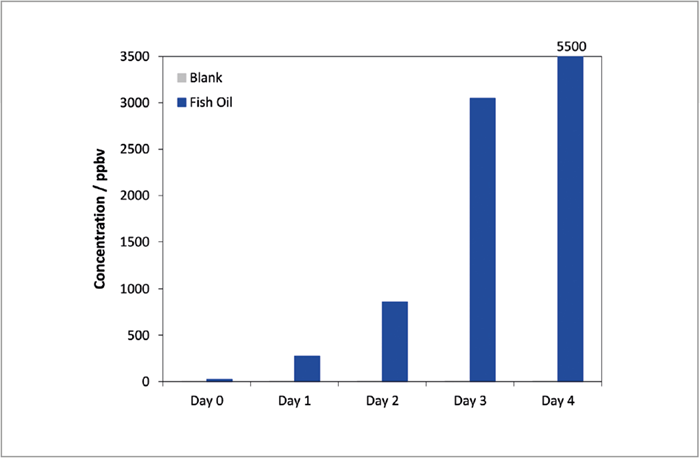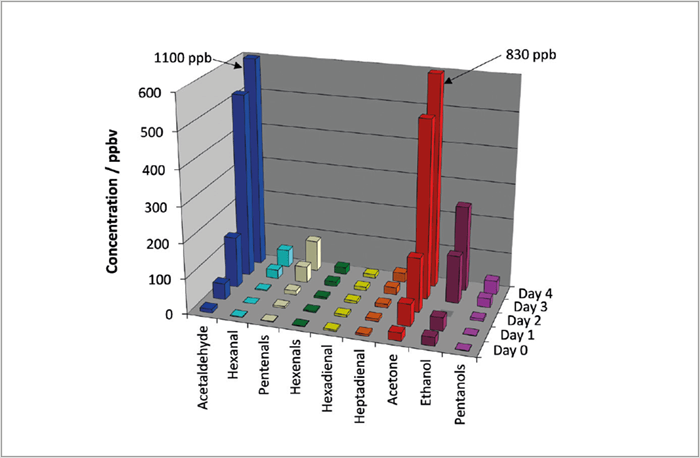Edible oils rich in unsaturated fatty acids offer health benefits, but they are susceptible to autoxidation, which compromises product flavor and shortens its shelf-life. Generally, greater unsaturation in the fatty acid chain means more extensive autoxidation will occur in a given time. Autoxidation produces volatile aldehydes, ketones, and saturated and unsaturated hydrocarbons, providing sensitive indicators of oxidative status for instrumental methods. Traditional methods for fish oils have targeted propanal, but application of SIFT-MS enables other confirmatory volatiles to be detected simultaneously.


In this study, five 1-mL fish oil capsules (“Giant Eagle” brand, USA) were placed in duplicate wide-mouthed sample jars. Capsules were opened inside the jars, and the contents allowed to drain. Jars were capped immediately (trapping laboratory air) and left on a laboratory bench at ambient temperature for the duration of the tests (diurnal variation from 12 to 25 °C). Figure 1 shows the propanal concentration measured for fish oil samples and blanks over a four-day period. The “Day 0” measurements were made one hour after the samples were prepared (i.e. on the freshly cut capsules) and reveal a significant concentration of propanal in the “fresh” oil (22 parts-per-billion by volume; ppbv). Other volatile oxidation products are shown in Figure 2. The very volatile compounds – acetaldehyde, acetone and ethanol – dominate. Note also that these data demonstrate the selectivity of SIFT-MS ionization: the NO+ reagent ion resolves isomeric acetone and propanal in real-time. SIFT-MS very effectively detects early autoxidation of fish oil via traditional (e.g., propanal) and non-traditional marker compounds (acetaldehyde, acetone and ethanol). Simple detection of these polar, low-molecular-weight compounds arises from the unique application of ultra-soft chemical ionization and direct headspace sampling in SIFT-MS. The rapid, high-sensitivity analysis provided by SIFT-MS is ideal for high-throughput quality assurance of fish and other edible oils, both in-process or off-line in the laboratory via autosampler integration.




